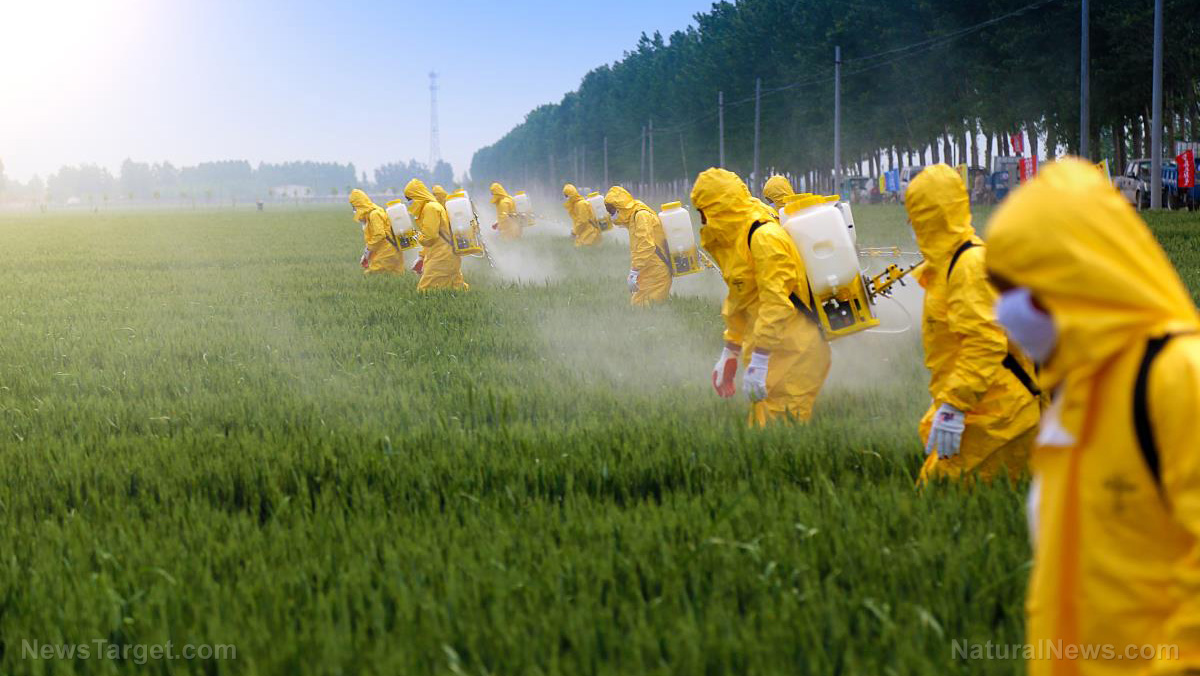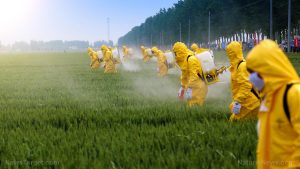Dimethoate – toxicity, side effects, diseases and environmental impacts
12/05/2017 / By Michelle Simmons

Dimethoate is an organophosphate insecticide that is used to control a wide variety of pests, such as aphids, thrips, whiteflies, leaf and plant hoppers, fruit flies, jassids, and spidermites. It is applied on apples, pears, citrus fruits, alfalfa, corn, cotton, pecans, safflower, sorghum, soybean, sugarbeet, turnips, beetroot, tobacco, and cereals like wheat, rye and triticale. It was first used in the 1960s and works by inhibiting cholinesterase activities. It is sold in the forms of aerosol spray, dust, emulsifiable concentrate, and ULV concentrate. Dimethoate has the molecular formula of C5H12NO3PS2.

List of known side effects
Dimethoate is toxic if it comes in contact with the skin and eyes and if swallowed. It can cause eye irritation and prolonged or repeated exposure to this chemical can cause damage to organs. Dimethoate can also cause poisoning to humans. Like all other organophosphorus compounds, dimethoate poisoning can cause symptoms of excessive salivation, sweating, rhinorrhea, and tearing. Moreover, it can cause muscle twitching, weakness, tremor, incoordination, headache, dizziness, nausea, vomiting, abdominal cramps, and diarrhea. Moreover, it can cause respiratory depression, tightness in chest, wheezing, productive cough, fluid in lungs, and pin-point pupils sometimes with blurred or dark vision. In severe cases, it can cause seizures, incontinence, respiratory depression, and loss of consciousness. For its environmental consequences, it is extremely toxic to honeybees, moderately to highly toxic to birds, and moderately toxic to aquatic organisms.
Body systems affected by dimethoate
Dimethoate adversely affects different body systems, which include the integumentary, ocular, nervous, muscular, digestive and respiratory systems.
Items that can contain dimethoate
Dimethoate products are sold under the trade names of Cekuthoate, Chimigor 40, Cygon 400, Danadim, Danadim Progress, Daphene, De-Fend, Demos NF, Devigon, Dimate 267, Dimet, Dimethoate 40, Dimethoat Tech 95%, Dimethopgen, Ferkethion, Fostion MM, Perfekthion, Rogodan, Rogodial, Rogor, Roxion, Sevigor, and Trimetion.
How to avoid dimethoate
One of the ways to reduce exposure or avoid dimethoate is to enclose operations and use local exhaust ventilation at the area of chemical release. However, if proper ventilation is not available, respirators must be worn. Another way is to wear protective work clothing, such as suits, gloves, footwear and headgear. It is also important to wear an impact-resistant eye protection with side shields or goggles, or a face shield together with goggles to avoid eye contact. Lastly, it is important to remember to wash hands carefully right after working with the chemical.
Where to learn more
- A world in crisis: 57 different pesticides found in honeybee populations around the globe
- Who knew? Many wines are contaminated with cancer-causing herbicide glyphosate
- CHEMICAL WARFARE RED ALERT: Zika panic DEET chemical part of a brain damaging binary weapon being carpet bombed across America’s cities
- Toxins.news
- Pesticides.news
Summary
Dimethoate, an organophosphate insecticide, is used to kill pests like aphids, thrips, whiteflies, leaf and plant hoppers, fruit flies, jassids, and spidermites on apples, pears, citrus fruits, alfalfa, corn, cotton, pecans, safflower, sorghum, soybean, sugarbeet, turnips, beetroot, tobacco, and cereals like wheat, rye, and triticale.
Dimethoate can irritate the skin and eyes.
Dimethoate can be poisonous to humans.
Dimethoate adversely affects the integumentary, ocular, nervous, muscular, digestive, and respiratory systems.
Dimethoate is extremely toxic to honeybees, moderately to highly toxic to birds, and moderately toxic to aquatic organisms.
Sources include:
Tagged Under:



















